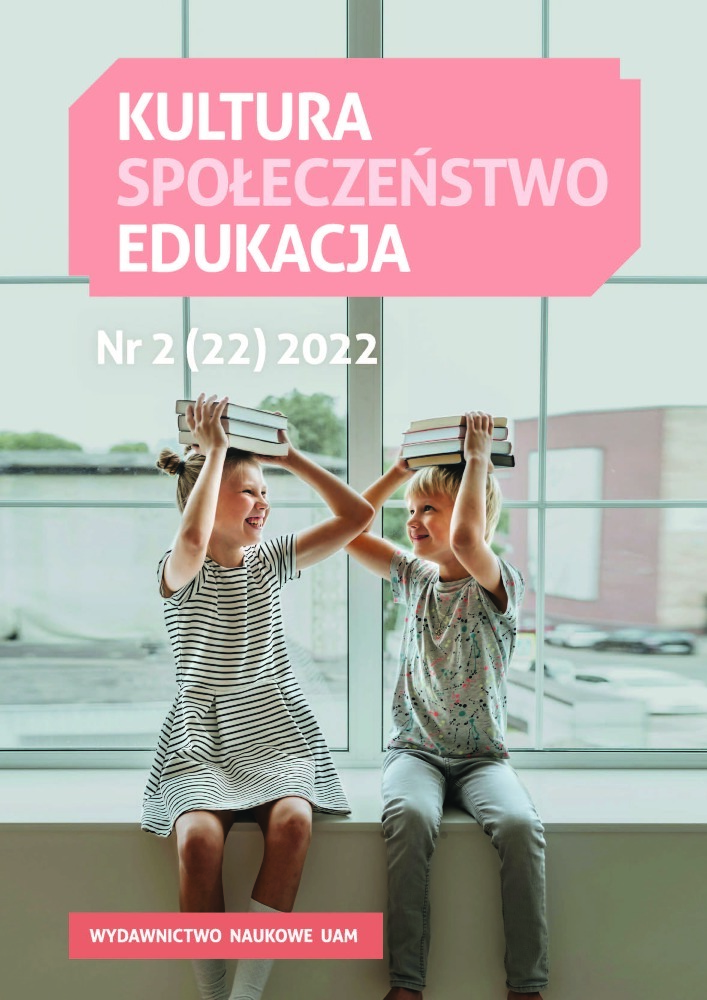Abstract
The bilingual process is widely observed among many people and many cultures. Out of the many different forms of bilingualism, the form of bilingualism that most often appears is the subsequent one, being the result of learning a second language in school settings. When developing this type of bilingualism, both the language competences of language teachers and the quality of their teaching talent are very important. In order to assess this type of interdependence, a study that focuses on the teachers’ skills and competences, on the one hand, and the impact L2 teachers have on students, on the other hand, was designed. The study involved 50 teachers and 100 students taught by them, all of them attending vocational secondary schools in southern Poland. All participants of the study (i.e. both the teachers and the students) were to answer six verification questions included in the Matura exam 2018. The results obtained during the research indicate the existence of an interdependence between the actual level of proficiency of foreign language (FL) teachers and the final evel of L2 proficiency presented by their students. Generally, the students led by language teachers with a higher overall level of communicative competence showed an overall better command of English in the survey.
References
Anderson, L.W., & Krathwohl, D.R. (2001). A Taxonomy for Learning, Teaching and Assessing: A Revision of Bloom's Taxonomy of Educational Objectives: Complete Edition. Longman.
Baumgartner, B. (2008). Przeżyć dwujęzyczność. Jak wychować dziecko dwujęzyczne. Wydawnictwo Harmonia.
Common European Framework of Reference for Languages: Learning, Teaching, Assessment. Companion Volume. (2020). Council of Europe. www.coe.int/lang-cefrCore-Curriculum. https://podstawaprogramowa.pl/Liceum-technikum/Jezyk-obcy-nowozytny
Iluk, J. (2000). Nauczanie bilingwalne; modele, koncepcje, założenia metodyczne. Wydawnictwa Uniwersytetu Śląskiego.
Keller, T. (2011). The Various Roles of the Teacher in the English Classroom. GRIN Verlag. https://www.grin.com/document/319479
Malamah-Thomas, A. (1988). Classroom Interaction. Oxford University Press.
Maley, A. (2015). Overview: Creativity - the what, the why and the how. In: A. Maley, N. Peachey (eds.), Creativity in the English classroom (pp. 6-13). The British Council.
Nordquist, R. (2020). Interlanguage Definition and Examples. ThoughtCo. thoughtco.com/what-isinterlanguage-1691074
Nunan, D. (1996). Syllabus Design. Cambridge University Press.
Richards, J., & Rodgers, T. (2001). Approaches and Methods in Language Teaching. Cambridge University Press. https://doi.org/10.1017/CBO9780511667305 DOI: https://doi.org/10.1017/CBO9780511667305
Selinker, L. (1972). Interlanguage. International Review of Applied Linguistics in Language Teaching, 1, 4-19. https://doi.org/10.1515/iral.1972.10.1-4.209 DOI: https://doi.org/10.1515/iral.1972.10.1-4.209
Stepanek, L. (2015). A creative approach to language teaching: a way to recognize, encourage and appreciate students' contributions to language classes. In: A. Maley, N. Peachey (eds.), Creativity in the English classroom (pp. 98-103). The British Council.
Strykowska-Nowakowska, J. (2017). Kompetencje komunikacyjne nauczycieli. Studia Edukacyjne, 45,311-328. https://doi.org/10.14746/se.2017.45.21 DOI: https://doi.org/10.14746/se.2017.45.21
Sygulla, E. (2010). Nauczyciel w dzisiejszych czasach. Nowa Szkoła, 3, 33-38.
Szpotowicz, M., & Szulc-Kurpaska, M. (2013). Teaching English to Young Learners. Wydawnictwo Naukowe PWN.
Webster, A., Beveridge, M., & Reed, M. (2000), Managing the Literacy Curriculum; How Schools Can Become Communities of readers and Writers. Routledge.
License
Copyright (c) 2022 Alicja Kawałek , Krzysztof Polok, Małgorzata Przybysz- Zaremba

This work is licensed under a Creative Commons Attribution-NoDerivatives 4.0 International License.

